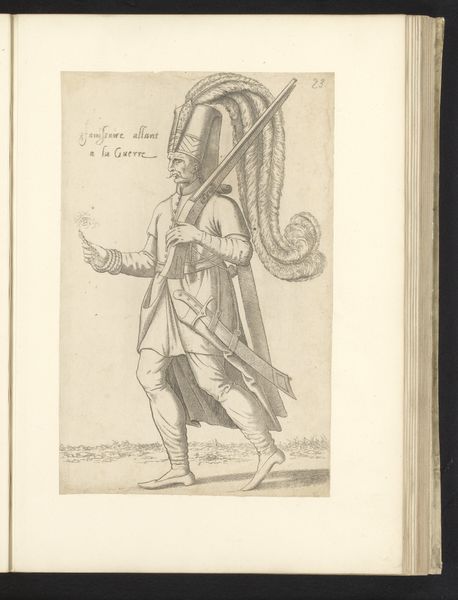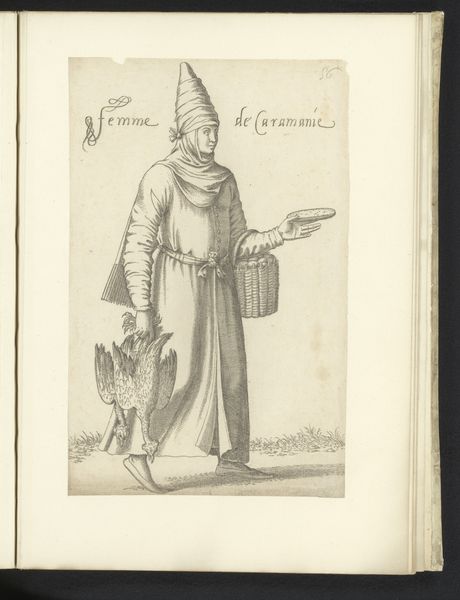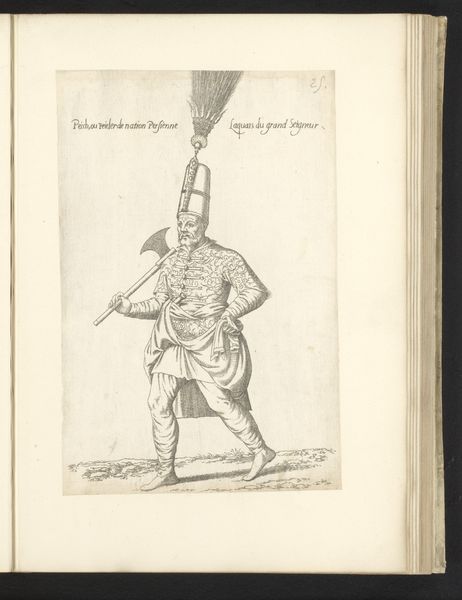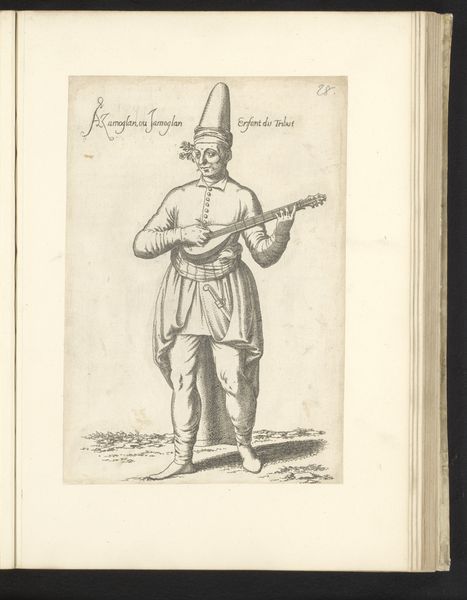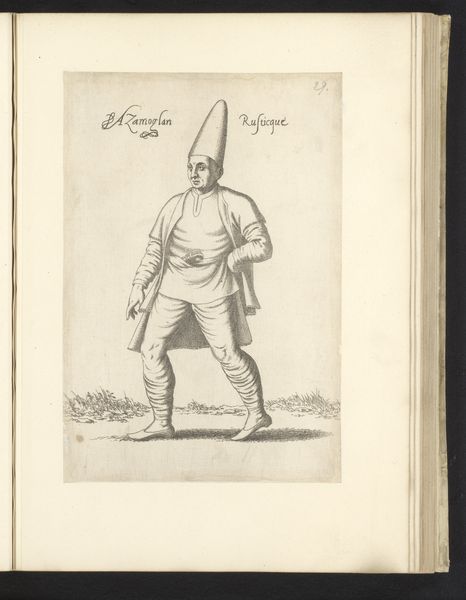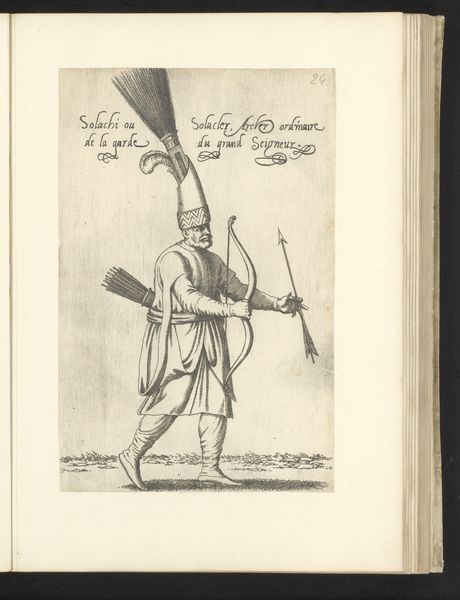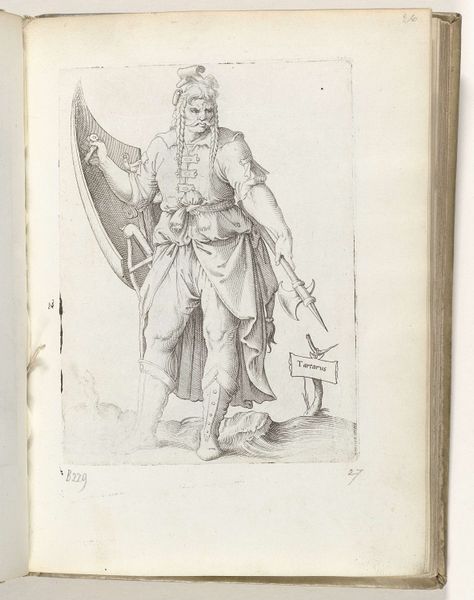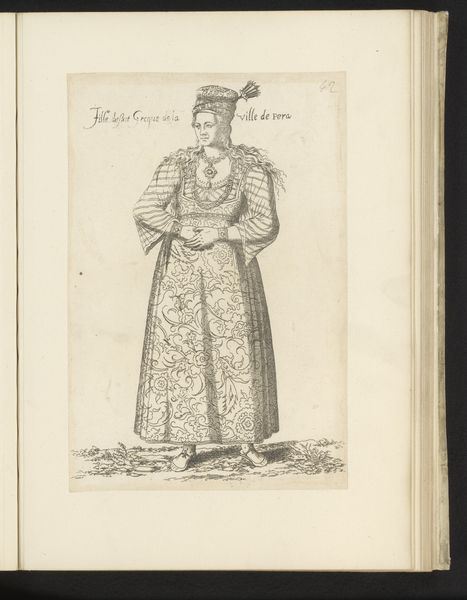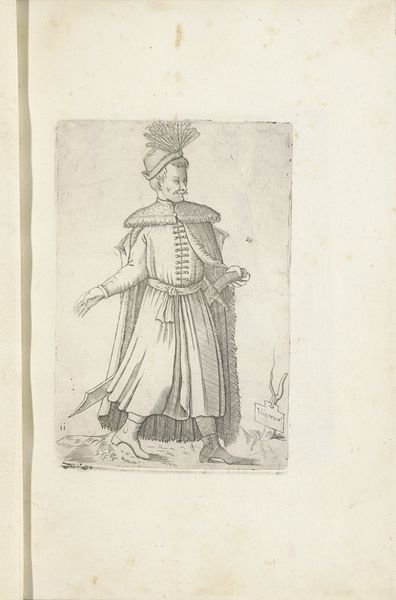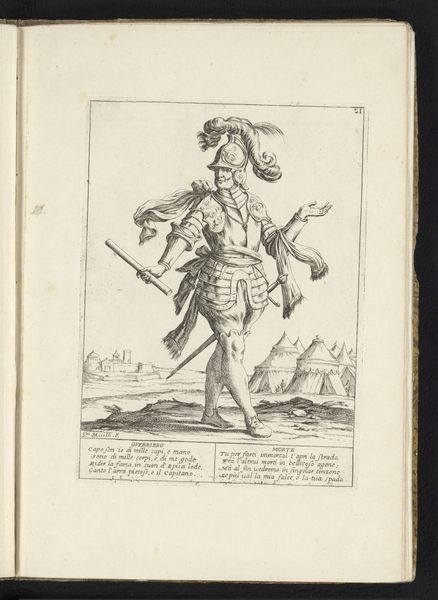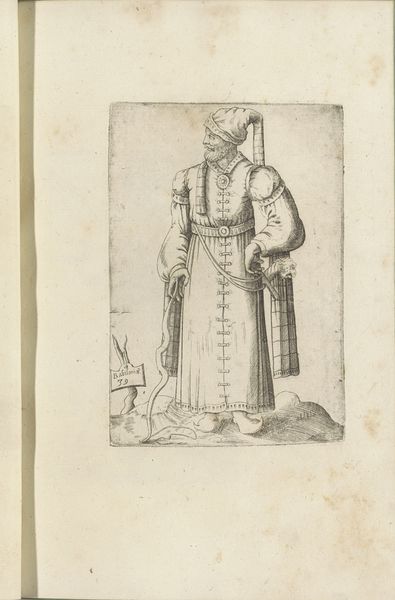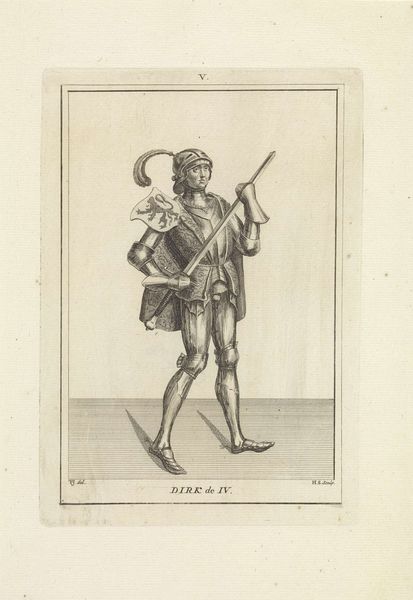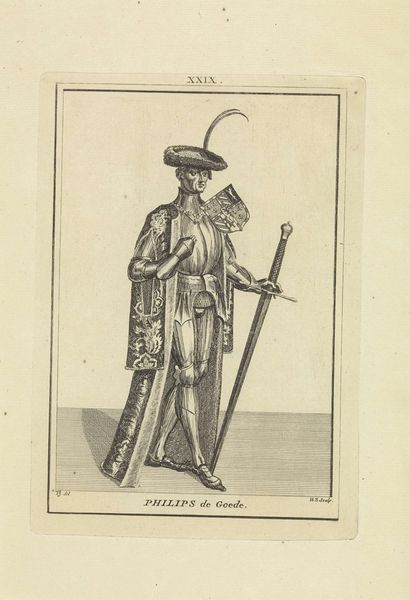
drawing, ink, pen
#
portrait
#
drawing
#
pen drawing
#
mannerism
#
figuration
#
ink
#
pen
#
genre-painting
Dimensions: height 270 mm, width 172 mm
Copyright: Rijks Museum: Open Domain
Curator: This ink and pen drawing, dating back to sometime between 1555 and 1568, presents us with the figure of a "Turkse kok," or Turkish cook, by the artist Léon Davent. What stands out to you initially? Editor: Well, the towering hat immediately catches the eye! It feels like a symbol of status and almost caricatures authority. The direct gaze also has an arresting quality. Curator: Yes, let’s consider the materiality of it as a print. The medium allows for a replication and circulation of this image. This speaks to broader patterns of consumption in early modern Europe. How might this feed into colonial dynamics? Editor: It seems as though Davent intends to emphasize the "exotic other." Everything, from the turban to his basket filled with unusual fruits or vegetables, presents the cook as culturally distinct, someone foreign entering into their lives. This also fits into a fascination with the Orient common at the time. Curator: Precisely! The drawing itself functions as a commodity, allowing a certain demographic access to imagery of other cultures and perhaps influence perceptions about their labor, traditions, and worth within the burgeoning European economic systems. The crisp line work shows his mastery. Editor: But I wonder about that carefully rendered basket of ingredients. They’re presented almost like attributes – symbols meant to amplify his role. The viewer isn’t just seeing a cook but, through those specific fruits and vegetables, grasping at something more – access to Ottoman refinement? Hints of culinary and cultural sophistication that exist outside European norms? Curator: Perhaps, or is it more simply a visual inventory of the sorts of imported goods entering the European marketplace during the 16th century? Consider the labour involved in their cultivation, trade, and eventual consumption. Each ingredient tells a story of international exchange, reflecting power imbalances and the globalized world that was beginning to emerge. Editor: It's a point well taken. He’s more than just an individual; he embodies cultural exchange, perhaps even the tensions inherent in that process. This image becomes a window into those complicated, shifting social attitudes toward foreign influence. Curator: Absolutely. This glimpse into the means of producing these images offers valuable context to unpack not just the image itself, but its journey into society at the time. Editor: In short, this “Turkish Cook” gives us a fascinating recipe for considering visual codes and the era's intercultural relationships.
Comments
No comments
Be the first to comment and join the conversation on the ultimate creative platform.
